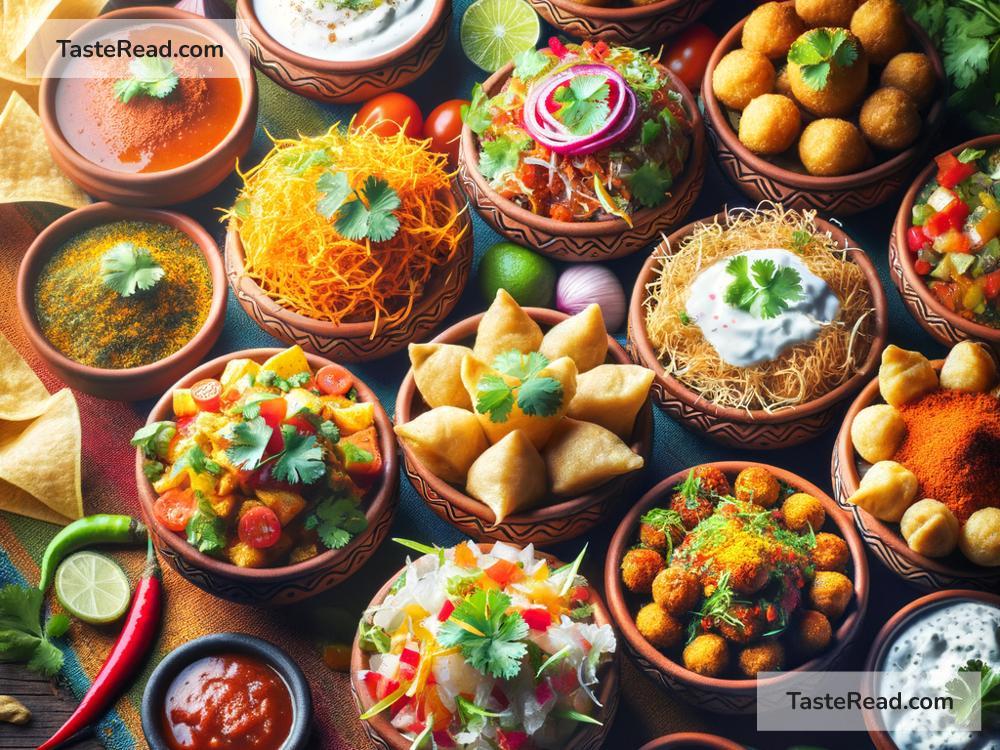The Delectably Diverse World of Indian Chaat and Its Global Journey
A burst of flavors in every bite, a symphony of textures, and an amalgamation of sweet, spicy, tangy, and savory—welcome to the colorful and vibrant universe of Indian Chaat. This street food, which began its journey from the bylanes of India, has now made its way to the corners of the world, captivating taste buds and bringing together people over its delicious uniqueness. But how did this humble street snack become a global sensation? Let’s dive into the history of Indian Chaat and explore its journey across oceans.
The Origins of Chaat
Chaat’s story begins centuries ago in the heart of India. The word ‘Chaat’ is derived from the Hindi verb ‘chaatna,’ which means to lick—a testament to how irresistibly tasty these snacks are, compelling you to lick your fingers clean. While it’s difficult to pinpoint the exact origin due to its diverse variations, many believe chaat originated in Uttar Pradesh, and from there, it spread to other parts of India, each region adding its unique twist to the dish.
One popular legend traces chaat back to the ancient kingdoms of India, where it was created as a digestive and palate cleanser for the royals. Another tale from the Mughal era suggests that chaat was introduced to awaken the taste buds and appetites of the emperors during the 16th century. Regardless of its true origin, what’s undeniable is chaat’s longstanding presence in India’s culinary landscape.
The Evolution into a Street Food Staple
As chaat made its way out of royal kitchens and into the streets, it transformed. Street vendors, known affectionately as chaatwalas, started experimenting, leading to the creation of a myriad of varieties. From Aloo Tikki (spiced potato patties) in the north to Puchkas (hollow, crispy orbs filled with tangy water) in the east, each region proudly boasts its own version of chaat. This diversity, combined with affordability, made chaat the go-to snack for millions.
Key Ingredients and Varieties
What makes chaat strikingly distinct are the ingredients combining different textures and flavors. Key ingredients typically include fried dough, puffed rice, yogurt, tamarind chutney, and an assortment of spices known as chaat masala. Varieties are abundant—Bhel Puri, Sev Puri, Dahi Puri, Samosa Chaat, and many more, each offering a unique taste experience.
Chaat’s Culinary Expedition Across the Globe
The global journey of chaat began with the Indian diaspora, who took their food culture with them as they moved across the world. Initially served in small Indian eateries and community gatherings, chaat gradually started appealing to a wider audience, transcending cultural and geographical boundaries. Today, from London to New York, global cities boast chaat in the menus of not only traditional Indian restaurants but also in fusion and gourmet eateries. Food festivals, culinary shows, and social media have also played a significant role in amplifying the popularity of chaat on the global stage.
The Universal Appeal of Chaat
What makes chaat universally appealing is its ability to cater to a wide array of palates. The customizable nature of chaat—be it adjusting the spice levels or adding preferred ingredients—makes it a hit among diverse audiences. Moreover, its vibrant presentation and bold flavors offer an adventurous eating experience that’s hard to find in other snacks.
Conclusion
Chaat, a simple street snack, encapsulates the essence of Indian culinary diversity. Its journey from the ancient royal courts of India to the bustling streets of global cities is a testament to its timeless appeal. Chaat is not just food; it’s an experience, a celebration of flavors that continues to bring people together, transcending geographical and cultural barriers. As chaat continues to travel and evolve, it remains a beloved emblem of Indian cuisine on the international stage, inviting everyone to partake in its delightful gastronomic joyride. So, the next time you find yourself at a chaat stall, anywhere in the world, remember you’re not just savoring a snack but being part of a rich culinary history that’s as flavorful as the chaat itself.


